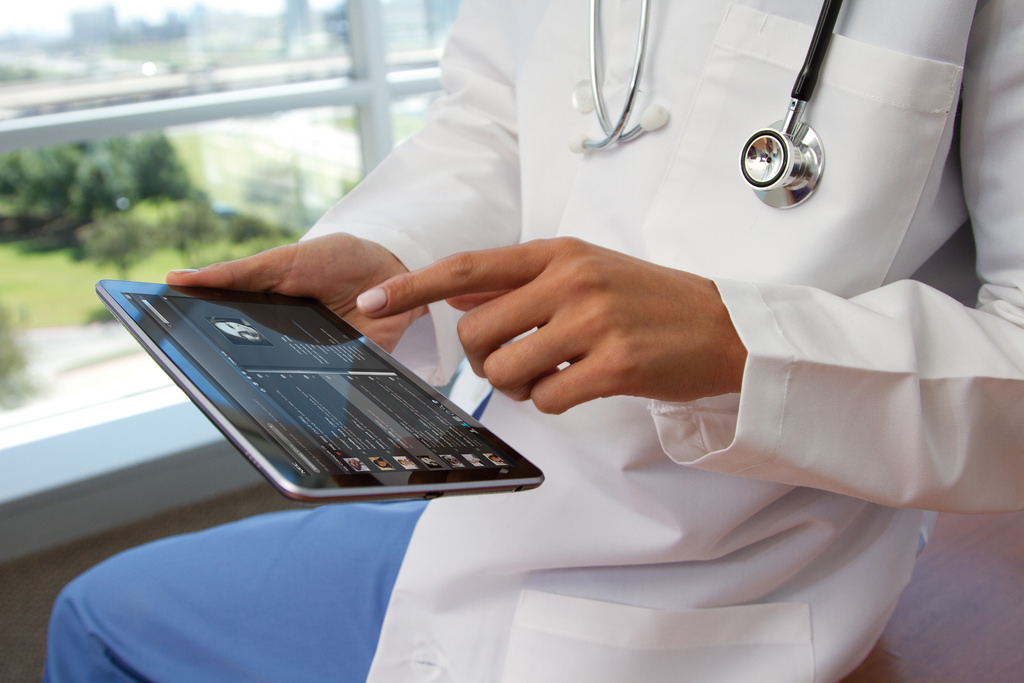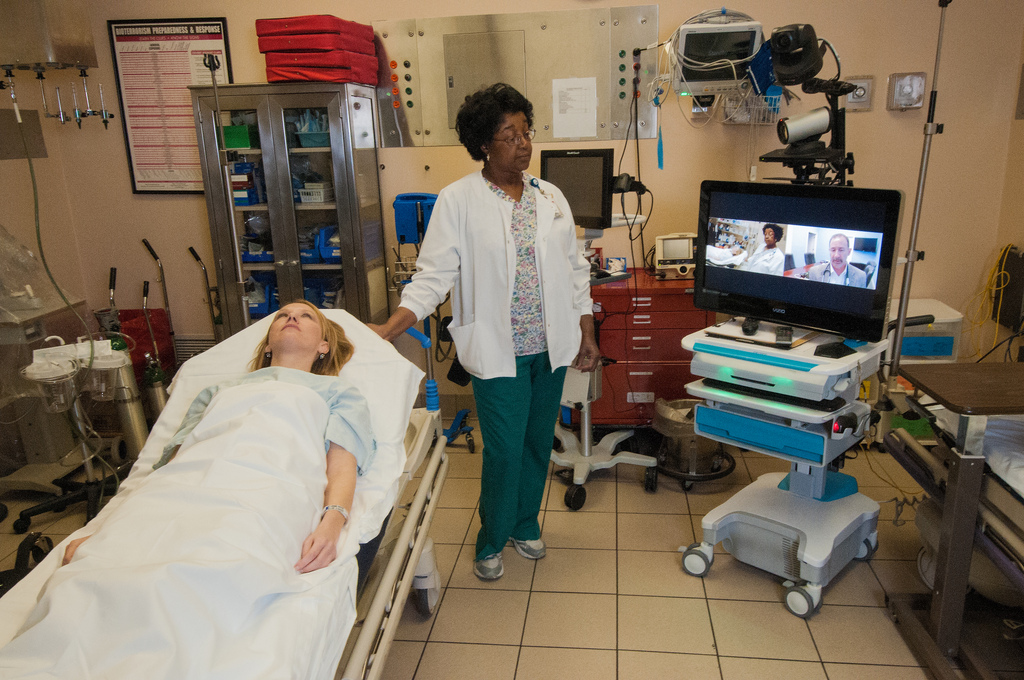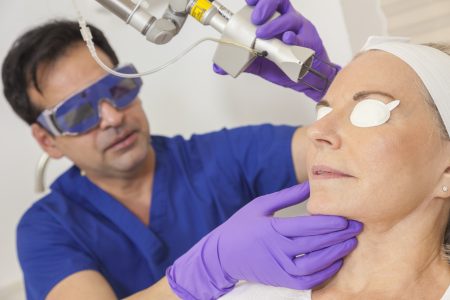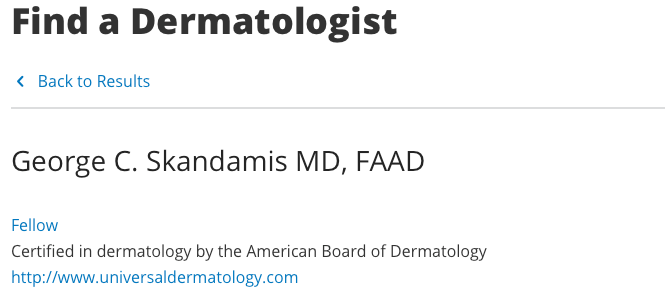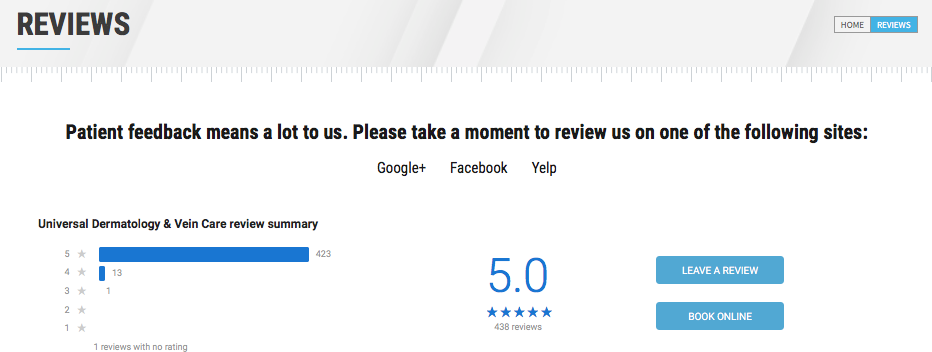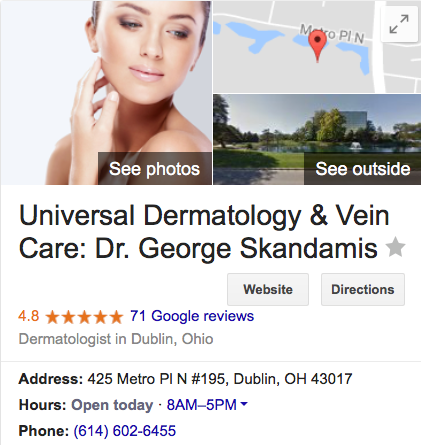What Are the Benefits of Telemedicine for Dermatology?
Technology has been revolutionizing industries all over the world and dermatology and vein care are no different. This is particularly true where the internet and creating points of access are concerned. In medicine and healthcare fields, telehealth is a growing option. As a dermatology care facility that is always on the cutting edge of technology, we are very interested in the benefits of telemedicine. So, we took a closer look, and here is what we have found.
The Difference Between Telehealth and Telemedicine?
While it is easy to picture video-conference interactions when we hear the term telehealth, it is so much more than that. In a nutshell, telehealth is any kind of medical care that allows medical practitioners to connect with their patients at a distance through the use of telecommunications. It is through telehealth technologies that telemedicine solutions become available. In other words, telemedicine is a specific kind of telehealth option.
What Exactly Is Telemedicine?
The term telemedicine refers to two things:
- A mobile app that allows medical practitioners and their patients to communicate through video chat.
- A software option that allows primary care providers to liaise with specialists at a distance by sending photos of certain conditions for a rapid, remote diagnosis.
Through these telemedicine solutions, patients are able to benefit from remote diagnosis and other kinds of care as they connect with their healthcare providers and dermatologists from a distance.
In What Ways Does Telemedicine Benefit the Field of Dermatology?
Telemedicine solutions can offer lots of benefits to dermatologists and their patients. Telemedicine solutions provide dermatologists and patients with options to stay connected even when they are miles apart. For example, there is no need for a patient to be in the room for a doctor to diagnosis them or follow up with a treatment. As such, we are able to provide faster, more rapid care solutions in a convenient and easily accessible way. This includes catching things like skin cancer more quickly.
7 Benefits of Telemedicine Remote Diagnosis Solutions for Dermatology
1. Rapid Service Delivery
Telemedicine offers the ability to send files – like reports or photos of skin spots – and have responses in the space of minutes. This can connect patients with both their primary care practitioner and specialists like dermatologists quickly and simultaneously. Consequently, patients can receive the best treatment possible from a collaboration between two or more doctors.
2. Privacy and Convenience
Through being able to have their dermatology consultation and diagnosis performed remotely, patients have the convenience of seeing their dermatologists from the privacy of their own home. Although all in-office dermatology appointments are private and confidential, patients may feel more comfortable divulging their ailments in their own homes.
3. Accessible Care
Telemedicine also allows a specialist to monitor a patient remotely if need be. For example, patients living in rural communities or who face other accessibility problems (like elderly patients with mobility issues), will now have more accessible care. Patients in these circumstances no longer have to worry about feeling “cut off” when they can be connected through telemedicine.
4. Rapid Emergency Care
There are times when you or a loved one may have a dermatological emergency that you will want to have assessed right away. In cases like these, telemedicine provides great options for both you and dermatologist. Being able to check in with your dermatologist and/or your primary care physician right away can be comforting. Even if you have already made your way to your primary care physician, he or she can easily check in with your dermatologist concerning the situation to provide you with a rapid solution.
5. Better Treatment Follow-Up and Patient Care
With telemedicine, dermatologists are able to check in with their patients more regularly. As a result, this improves the overall care experience for patients and their dermatologists. As all patients respond to treatments differently, this type of care helps providers monitor your treatment course and make any adjustments if needed.
6. Increased Engagement
Now that patients can connect with dermatologists more conveniently through telemedicine, many do so more frequently. Knowing they can readily reach their dermatologists may prevent them from hesitating to seek treatment. This can result catching some conditions before they progress.
7. Reduced Care Costs
Telemedicine solutions help reduce care costs for both patients and their dermatologists. The cost of accommodating patients in care facilities can be significantly reduced if we can treat them remotely. The costs of traveling to care facilities for treatment can be significantly reduced for patients as well.
Contact Us Today!
If you would like more information on telemedicine and dermatological care, contact our office. Our team will be happy to assist you with any questions you may have.
SaveSave
Lear MoreWhat Are the Benefits of the Fractional CO2 Laser Treatment?
Treatments Abound
Currently, there are a lot of effective skin care treatments that reduce signs of aging and improve the condition of the skin. These treatments range from using simple topical creams to actual procedures that can be done to improve the skin’s condition. Laser treatments, in particular, are very popular skin care options and the technology used in the treatments continue to evolve—becoming more sophisticated and effective.
The Value of Healthy Glowing Skin
When it comes to skincare, the aim is always to maintain blemish-free, glowing, and youthful-looking skin. This is especially true for the skin on our face as we age. After all, our face is the first thing others may notice about us, so the skin thereof plays an important part in how we feel about our social interactions with others.
Great-looking skin tends to give us more confidence, while the opposite is also true—blemished or aged skin can negatively affect our self-esteem. Everything from fine lines and wrinkles to acne scars and age spots can affect the quality of our skin and our social confidence. It is, therefore, important that we take the steps necessary to take good care of our skin and enjoy the many benefits of proper skin care.
Overview: About the Fractional CO2 Laser Technology
Laser treatments, though more invasive than many topical skin care options are increasingly popular treatments. Laser technology can treat a number of skin conditions. One of the latest options—the fractional CO2 laser—uses the most advanced skin revitalization laser treatment technology and has been shown to produce astounding anti-aging results for skin care patients. In fact, studies prove that the fractional CO2 treatment not only reduces the effects of aging on the skin, but also reverses existing signs of aging, including:
– Acne and other trauma-related scars
– Age Spots
– Wrinkles
– Crow’s feet
– “Smoker’s Lines”
After just one treatment, skin appears significantly healthier, rejuvenated, and smoother than prior to the treatment.
How It Works
The fractional CO2 laser treatment works by using a pattern of carbon dioxide laser beams to treat the skin below the surface. A doctor sends carbon dioxide beams into the skin. The beams create strategically-placed microscopic holes in the skin that allow the body to start producing more collagen. Collagen is the body’s natural hormone that keeps the skin healthy and youthful.
The secret to the effectiveness of the fractional CO2 laser technology rests in the fragmented nature of its treatment patterns. This treatment does not allow its laser energy to affect all parts of the skin at once. Instead, it affects a portion of the skin and not the entire skin’s surface. This allows the recovery time to speed up, thereby enhancing results. Patients are usually fully healed within four to five days on average.
What to Expect With the Fractional CO2 Laser Treatment
The QuadraLASE Fractional CO2 Laser treatment has many important features. For starters, the treatment sessions are not very long. Each session lasts an average of one hour. Additionally, while the treatment is not in any way painful, there are some sensations that patients can look out for. These sensations include a slight sunburned feeling accompanied by some peeling. Thankfully, these symptoms usually pass within the average healing and recovery time of about four to five days.
The results, however, are practically immediate, and patients will notice that their scars, wrinkles, age spots, and other skin conditions are far less noticeable as the skin continues to heal. As time goes on, the skin continues to clear as the newly-produced collagen helps the skin become tight, moisturized, and vibrant. Finally, the QuadraLASE Fractional CO2 laser treatment produces permanent results. Over time, it reduces the need for using over-the-counter topical treatments—making the treatment a real, lasting solution.
Additionally, it is possible to use the fractional CO2 laser treatment on the neck as well. Depending on the patient’s condition, a doctor may use the laser to spot treat specific problem areas. After all, all skin ages and oftentimes, most don’t think about the neck as a prime spot for anti-aging treatments.
As you consider the fractional CO2 laser treatment, remember that this will naturally cost more than everyday over-the-counter options you may already use. That said, it is a worthy investment as the treatment continues to pay for itself in value as time goes on. Having amazing, vibrant, and glowing skin is already worth its weight in gold. Of course, the confidence you get from having that glowing, healthy, youthful skin is the icing on the cake.
Am I a Candidate for Fractional CO2 Laser Treatments?
Science and research back the fractional CO2 laser technology. We offer this treatment because our certified and experienced dermatologists have carefully vetted the treatment and seen real results.
Now is the perfect time to undergo this treatment. Since you spend less time outside and more time bundled up, your skin will be more likely to be protected while it heals. Also, if you have this treatment now, your skin will be beautiful, and glowing when the warm weather hits.
We are not able to treat without first having a consultation with each patient. This helps us guarantee that the treatment will be safe and effective for the individual and his or her needs. We also do the consultations to manage expectations. There is a $50 consultation fee that goes towards the price of the treatment.
Universal Dermatology believes in being transparent with our prices and services. Therefore, we would like to let you know that the price ranges from $1000 to $3100 for eye or lip area only up to entire face, neck, and chest. Insurance does not cover this procedure.
To get started weighing your treatment options, contact our office today.
Lear MorePatch Testing for Contact Dermatitis

Allergic Contact Dermatitis
Allergic contact dermatitis is an immune response to an allergen. It can be itchy and can also make the skin dry, flaky, or scaly. However, the symptoms associated with this allergic reaction depend on your skin’s sensitivity. This substance may bring about other symptoms including oozing blisters, redness, leathery appearance, burning sensation, hives, sun sensitivity, and swelling.
Patch Testing and Why It’s Necessary
If you already know what you’re allergic to, that’s great! It will be much easier for you to avoid these chemicals and ingredients. However, if you came in contact with an allergen by accident, it is best to consult with a dermatologist to get the skin treatment you need. For those who suddenly develop patches of dermatitis due to unknown causes, patch testing is necessary.
Metals, leather, rubber, and cosmetics, for example, contain a number of chemicals that can cause allergic reactions. Through patch testing, you and your doctor will be able to identify the allergen. This will help your dermatologist determine which treatment is right for your skin and will be able to help you avoid the allergen in the future.
How Does Patch Testing Work?
An experienced dermatologist will perform the patch test. During the test, small amounts of certain substances are applied to your skin and secured with hypoallergenic tape. These are usually placed on the upper back to ensure they are not disturbed. You will need to come back after 48 hours to get the patches removed. At this time, your dermatologist will do a thorough examination of your skin’s reaction to the substances. Two additional days later, the specialist will examine the spots again to see if there is any delayed reaction.
Dermatologists have a standard set of substances they test on individuals with suspected Allergic Contact Dermatitis. This includes Balsam of Peru, benzocaine, lanolin or wool alcohols, rosin, rubber accelerators, quaternium-15, formaldehyde resin, formaldehyde, p-tert butylphenol, plants, paraben mix, paraphenylenediamine, nickel, neomycin, fragrances, imidazolidinyl urea, ethylenediamine, cobalt, epoxy resin, clioquinol, and chrome. This list includes additives in leather, ointments, clothes, and other items we come in contact with on a regular basis.
Please note that if your dermatologist suspects other allergens, more patches will be added for testing. This can include substances that you come in contact with in your workplace or substances contained in your specific makeup or creams. Bringing in samples of the products you use would also be useful to your doctor, especially if you suspect one of these products is causing the allergic reaction.
Test Results
Once the test results are in, your dermatologist will be able to give you details on what caused your recent allergic reaction. Your dermatologist will give you advice on how to avoid the substance you are allergic to. If the results reveal that you do not suffer from allergic contact dermatitis, you will be able to rule it out and your doctor can proceed with other tests to determine what is causing the skin irritation.
Irritant Contact Dermatitis
If an irritant caused the contact dermatitis, the symptoms are slightly different. This can include skin blistering and cracking because of extreme dryness, stiff or tight skin, swelling, ulcerations, and open sores. This form of contact dermatitis is caused by skin injuries due to environmental factors, chemicals, or friction. The severity of the condition can vary depending on the strength of the irritant, frequency or length of exposure, and skin susceptibility.
Solvents you have come in contact with including detergents, metalworking fluids, adhesives, acid, alkalis, friction, and water can also cause it. Sometimes, two or more of these irritants act together in irritating the skin.
Anyone can experience irritant contact dermatitis if they come into contact with an irritant. However, those who suffer from atopy (a predisposition to allergic reactions) are more susceptible to the condition.
Testing for Irritant Contact Dermatitis
Because this condition can coexist with allergic contact dermatitis, your dermatologist may decide to perform the test to rule this out. The rash typically heals on its own as long as you avoid exposure to the irritant, but special treatment is available if needed. Be sure to contact your dermatologist to get the right treatment for the condition.
If it’s necessary that you handle the irritant again, make sure to cover up and protect your skin. However, try to avoid them altogether if possible.
Patch testing is important to prevent and treat redness, irritation, and itching caused by contact with an allergen or irritant. If you think you may be experiencing contact dermatitis or would like to prevent it, contact us today.
Lear MoreThe Best Dermatologists in Ohio
Not all dermatologists are created equal and this is important to keep in mind when selecting your provider. So before we go into listing some specific dermatologists in Ohio that we admire as peers, here are some important points for you to consider in your search.
Check for Proper Credentials
First and foremost your dermatologist should be Board certified by the American Board of Dermatology and they should be a Fellow of the American Academy of Dermatology (FAAD). You can visit aad.org/find-a-derm and type in the name of the doctor you are researching to verify this. In the screenshot below you can see that aad.org has verified that our Dr. Skandamis is both a Fellow (FAAD) and is Certified in dermatology by AAD:
Beware of doctors with credentials that make it sound like they are board certified but in reality they did not go through the rigorous residency training. Such credentials can include FASLMS or any board of cosmetic, laser, or aesthetic medicine. These credentials do not require residency training and are credentials that can be purchased by any doctor wishing to open a med spa. This training is far inferior to the years spent becoming a board-certified dermatologist.
Research Patient Reviews
Being board certified is step 1—showcasing that you can take the training into the real world and run a successful practice is step 2. There is no better way to gauge this than to read reviews from past patients. While it is virtually impossible to find a practice that has 100% 5-star reviews, you want to find those that showcase a strong overall record with patients and get close to that level. You can find reviews on a variety of sites including Google, Facebook, Yelp, ZocDoc and through review aggregators on a practice’s website.
Don’t just rely on a few hand-picked testimonials on their website—be sure to check multiple sources to get the best overall picture of a practice.
Beware of the “Cheap” Providers
This is typically more of a concern when it comes to those that are not board-certified dermatologists so fortunately, you should not have to worry too much about this if you have followed the first two steps. If something jumps out as an outlier by being drastically underpriced, there is probably a good reason that that person does not charge typical market rates.
Some of Ohio’s Best Dermatologists
While we of course have a natural bias for Dr. Skandamis and our whole Universal Dermatology team, we wanted to take a moment and recognize some of our peers in Ohio that we admire:
Buckeye Dermatology | With locations in Grove City and Springfield, the physicians at Buckeye Dermatology are board certified in clinical and cosmetic dermatology along with micrographic surgery and aesthetician services.
Oakview Dermatology | Oakview Dermatology has four offices, three doctors, five physicians’ assistants and prides themselves on accepting ten different insurance providers. This staff strives to help each of their patients know the risks and procedures for skin cancer.
Dermatologists of Greater Columbus | Dr. Michael Conroy, M.D. founded DGC in 2008 after his fellowship at Geisinger Medical Center. He is now the president of the Central Ohio Dermatologic Society and specializes in surgical dermatology.
Central Ohio Skin and Cancer | Dr. Jason Nash is board certified in dermatopathology as well as anatomic and clinical pathology. After starting the in-house dermatopathology lab in 2007, he now reviews and studies all skin biopsies for cancerous cells and indicators.
Center for Surgical Dermatology | Specializing in Mohs Micrographic Skin Cancer surgery, the Center for Surgical Dermatology is home to four board certified dermatologists who are all members of the American Academy of Dermatology.
Skin Dermatology and Aesthetics | Partnering with Northeast Dermatology, Doctors Monique Kademian and Jeannie Hennessy are both certified dermatologists at Skin. Dr. Kademian has extensive experience with laser devices, and Dr. Hennessy is a board certified Dermatopathologist and Anatomic Pathologist.
Lear More
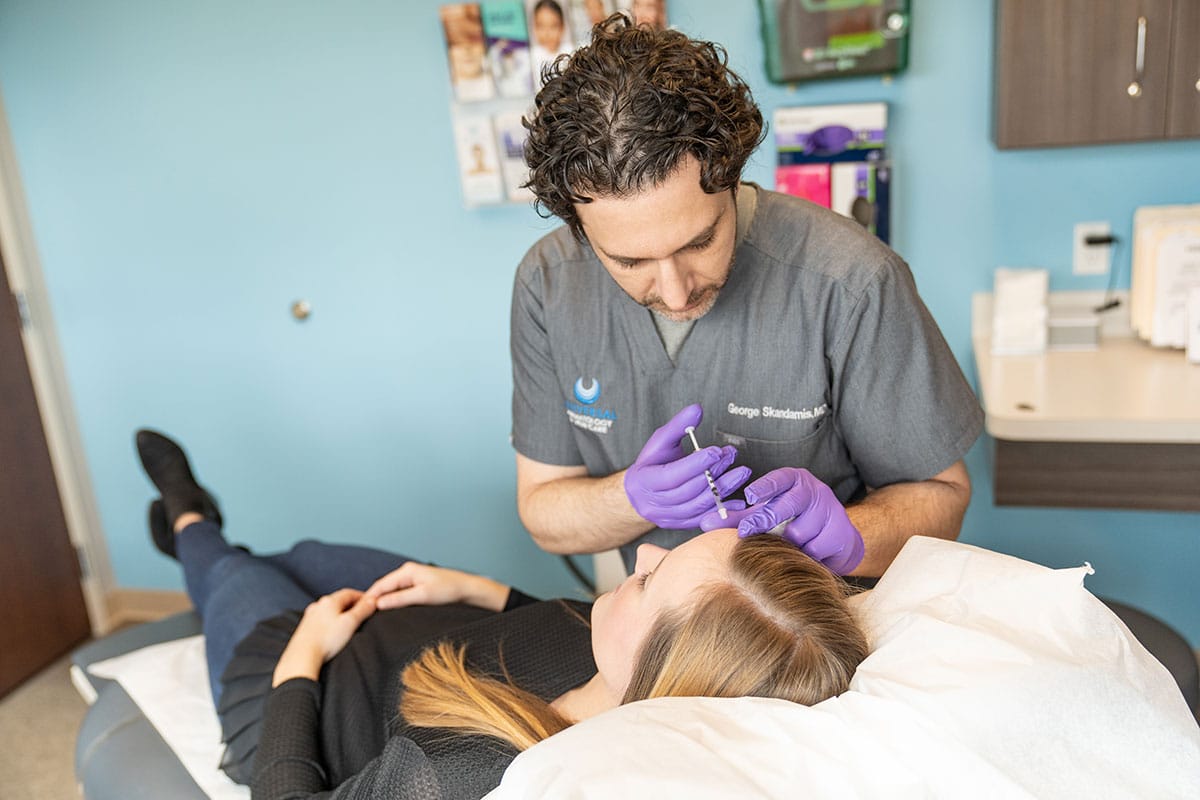 Our Dermatologists
Our Dermatologists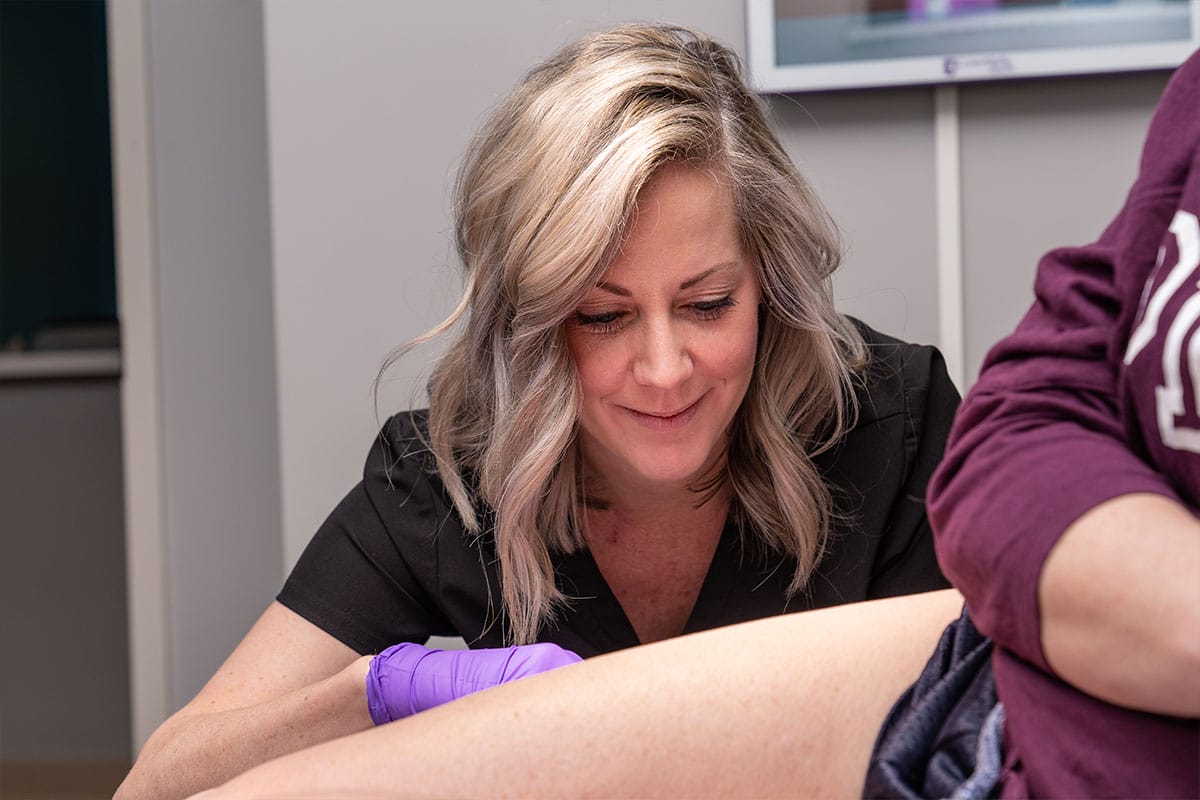 Our Providers
Our Providers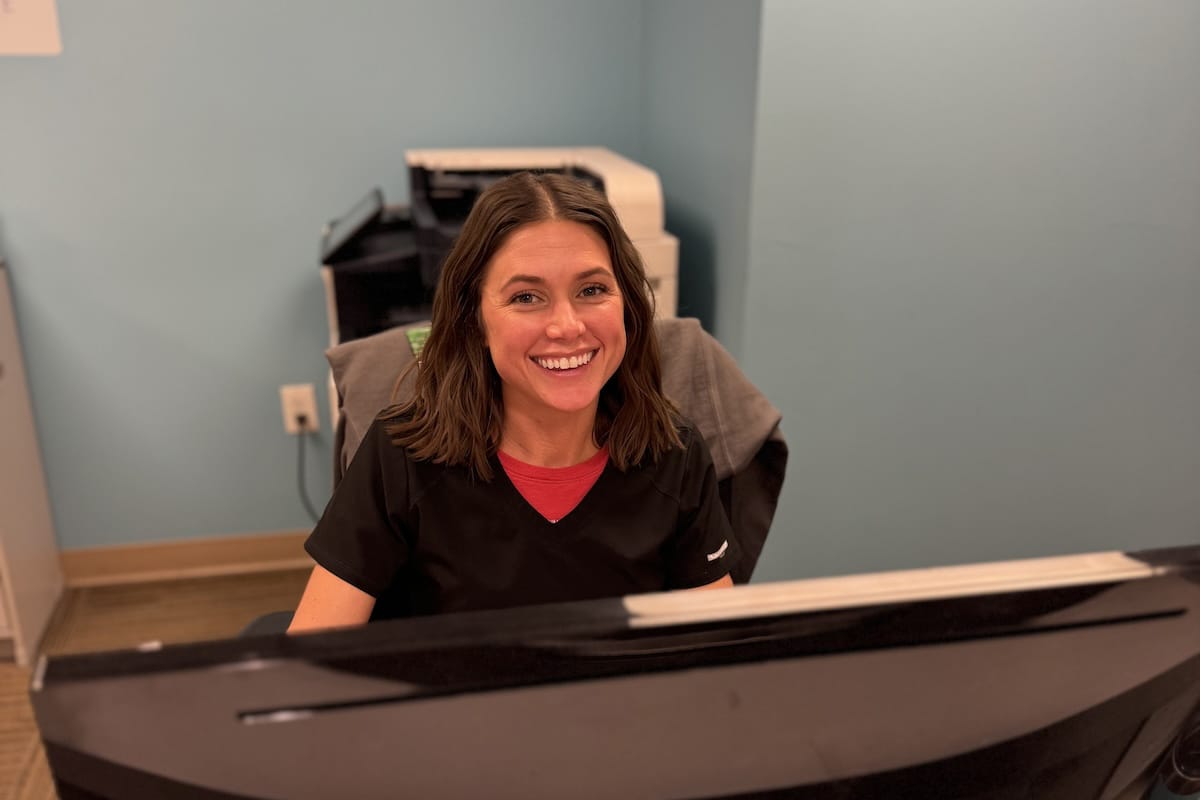 Our Staff
Our Staff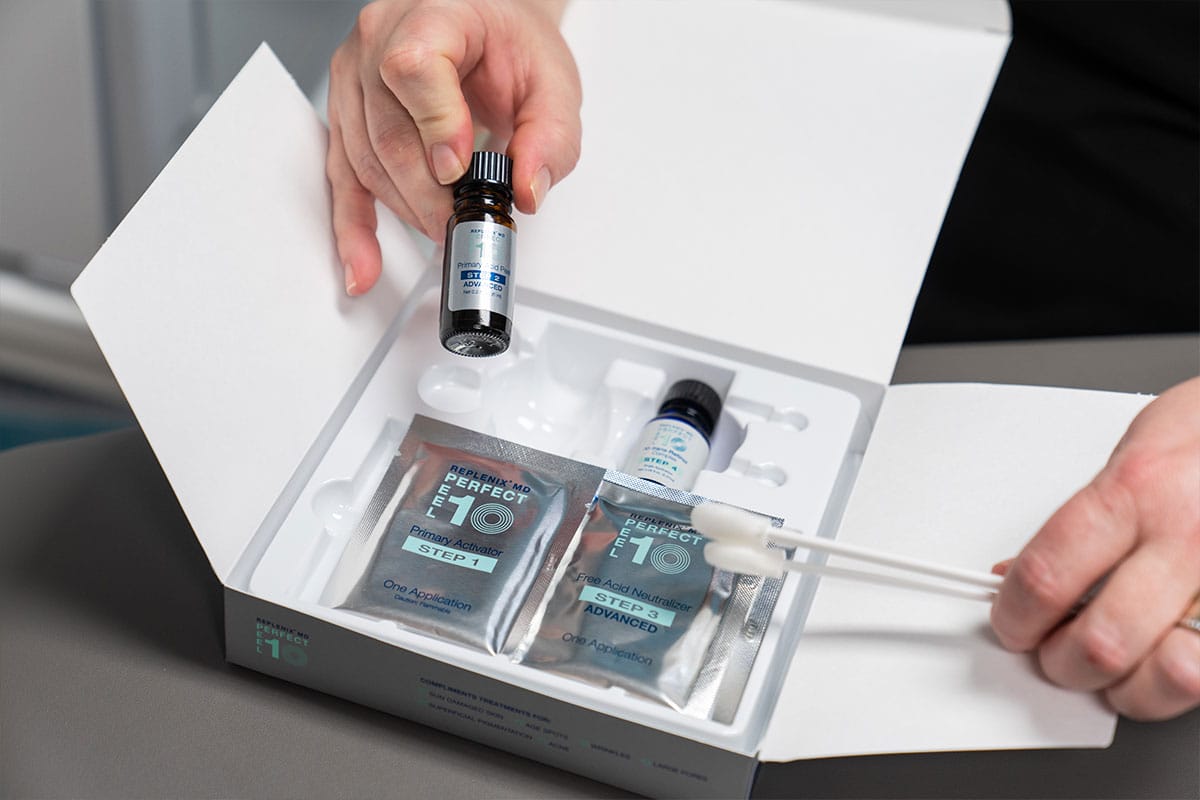 Specials
Specials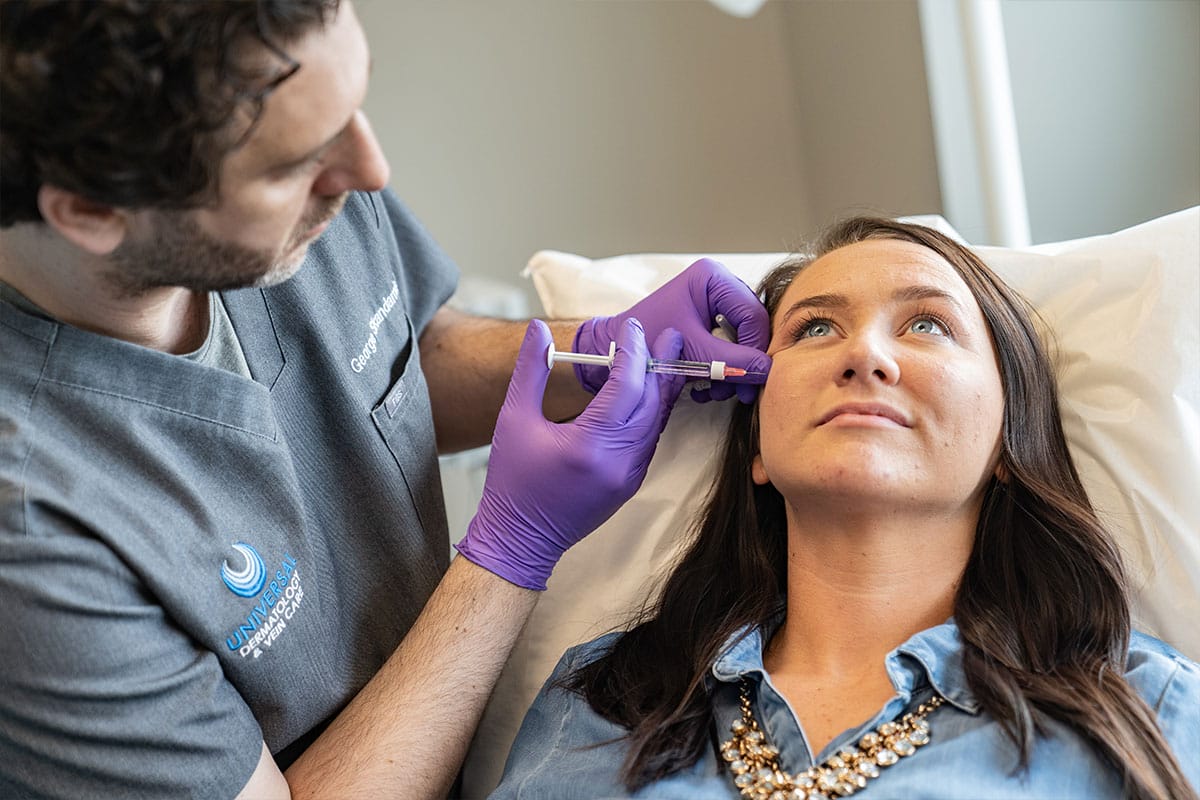 Financing
Financing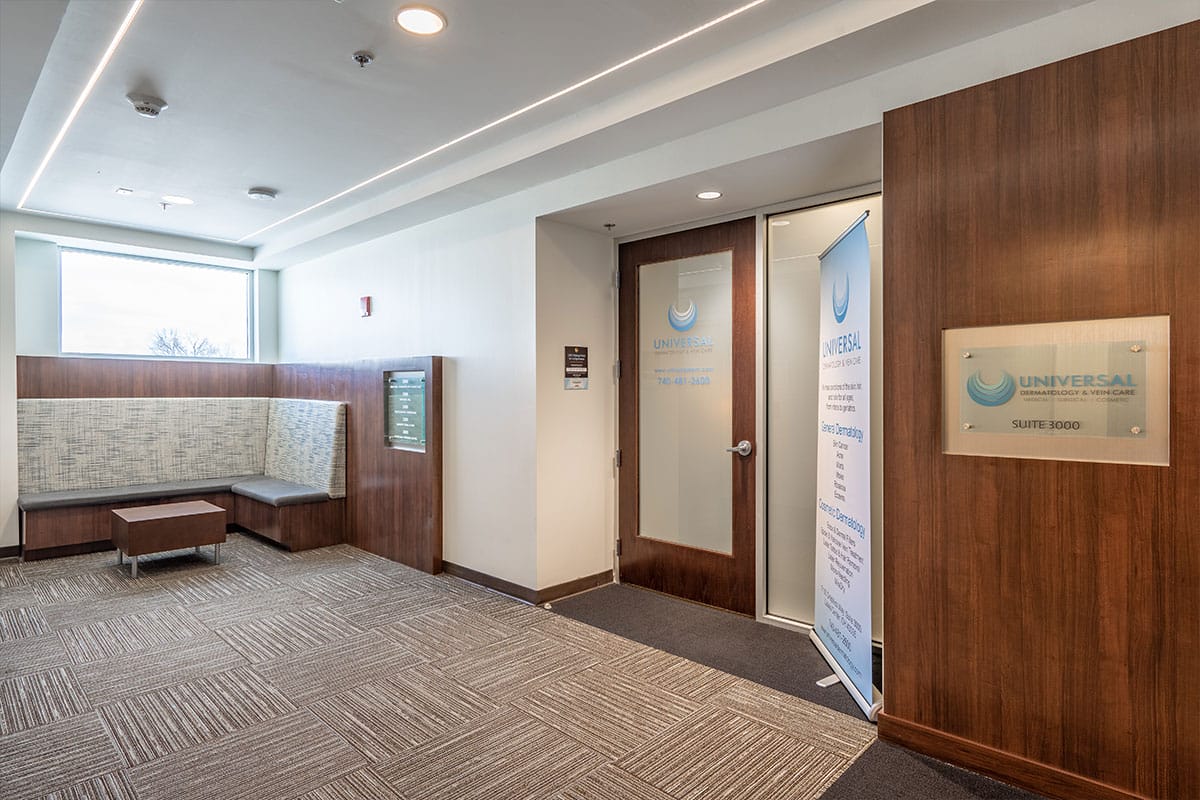 Pay Bill Online
Pay Bill Online